Cultural Dishes Meet for the Holidays
Written by: Alejandro Pineda Catalan
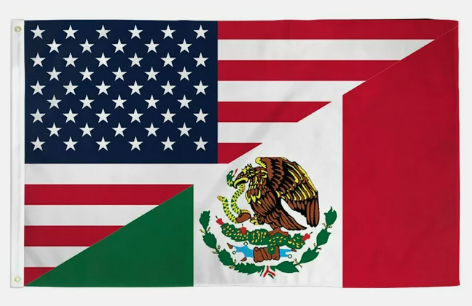
Growing up in a first-generation Mexican-American household, holidays always bring delicious cuisines. Despite that, holidays that are dominant in the U.S. and not Mexico aren’t celebrated the same. By growing up and attending school in America, you see what standard American holidays consist of. Television programs like “The Charlie Brown and Snoopy Show” portray what holidays such as Thanksgiving and Christmas mean and how to celebrate them. Unlike those who grew up in the United States, most Mexican parents and individuals were foreign to these festivities, let alone the food meant to be prepared.
As a young kid, along with my siblings and cousins, holidays involved getting together at whichever home could accommodate such a large group. The women would start in the early morning preparing authentic Mexican dishes. At the same time, the men would play cards and enjoy drinks. I can still vividly remember eating uncooked masa from the humongous pot prepared for tamales. Memories such as this one reminds me of all the beautiful Mexican meals we ate for holidays, regardless of whether they were traditional to American culture…
Mexican meals come with various ingredients that, when put together, create some of the most delicious plates in the world. Main dishes like tamales, pozole, and pambazos, are the show’s stars. Any of these could be seen as the turkey or ham in America. Side dishes such as mashed potatoes, yams, macaroni and cheese, etc., are common, especially during holiday dinners. A critical difference between these holiday dishes is that Mexican holiday meals don’t usually need a side dish. Of course, you’ll see rice and beans being served, but each dish named above is a meal on its own. Typically, you eat one main dish and move to the next, and as the night goes on, you end up eating each dish as everyone anticipates the desserts.
Desserts within Mexican culture have become widely popular for a reason: they’re that good. Holidays bring some of the most famous, such as ensalada de frutas, flan, and my favorite, arroz con leche. Aside from desserts, sweet and hot drinks are also prepared to wash down all the delicious food. Rompope and coquito are classics, along with ponche, which can be prepped in many ways and is basically a hot tea with cinnamon and a mix of fruits.
The recipe for these dishes be rooted in different regions within Mexico. Various climate conditions throughout the country contributed to what food was favored in each area. Mexican cuisine is typically noted as using what the agricultural landscape provides, just as they did hundreds of years ago. Many of the meals prepared on these special occasions can be rooted in what our ancestors ate daily. Their agricultural practices created a worldwide cultural phenomenon like other great cuisines today.
A holiday like Thanksgiving allows our families to have some time off from work and enjoy each other’s company. While cooking together and sharing food is a blessing, it is also how we can afford to have such a big meal to satisfy such a large family. With everyone chipping in, it was affordable, convenient, and undoubtedly some of the best memories. Although Thanksgiving was created throughout American history, it is still cherished and celebrated. That is, being with family, close friends, and the ones we love. Mexican culture has had a tremendous impact in the United States; the same can be said with Mexican Americans, who are also influenced by American holidays.
While you’ll still see our table filled with traditional meals, we’ve embraced American culture and love a well-prepared turkey. Over the next decade, I can see both cuisines blended, especially as future generations adapt to American lifestyles. Nonetheless, Mexicans will always stay close to our roots and be thankful for such a cheerful time during the holidays.
The Thanksgiving Address
Written by: Nina Haskins
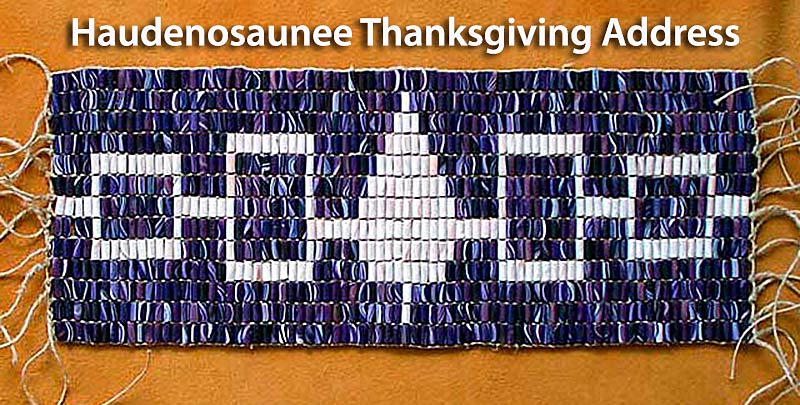
Thanksgiving as we know it today is beautiful: we gather with our loved ones and share laughs, memories, and food. Nevertheless, let us be honest: the history of Thanksgiving is devastating. Although celebrated as a union of the Pilgrims and the Wampanoag people over a grand feast, this is a sugarcoated guise for the years of genocide and cultural erasure of countless indigenous nations in North America. Independence Day, Indigenous People’s Day (formerly Christopher Columbus Day), and Thanksgiving are all examples of national holidays where celebration for some also means the dismissal and disregard of an entire population’s history. We cannot forget these histories, for when we do, we invite and repeat the same violence and intolerance that keeps this nation divided to this day. So, one way to honor the Indigenous people whose lives and history were lost is to educate ourselves on their history and culture.
I want to use this platform to discuss the Thanksgiving Address, a longstanding norm orchestrated by the Haudenosaunee Confederacy. The Confederacy comprises the Mohawks, Oneidas, Onondagas, Cayugas, and Senecas. They refer to this address in their native Onondaga language as ‘The Words That Come Before All Else.’ The tradition of the address has existed long before the holiday of Thanksgiving and initiates nearly every social, cultural, and political Haudenosaunee event. This address thanks Mother Earth and all forms of animate and inanimate life that work intrinsically together to sustain our planet and lives daily. In this address, gratitude comes first and foremost, reminding us to carry it with everything we do. Gratitude recognizes and builds connections, which incites us to make smarter choices about how we treat our planet. Below is a video from the Onondaga Historical Association about the Thanksgiving Address:
No matter how much we poison her waters, chop down her trees, and mine for minerals in her soil, our earth still cares and provides for us. In this regard, climate change is not a new concept but a wake-up call to mend our severed relationship with the planet. Every day, there is so much to be thankful for. I hope that we learn from the Haudenosaunee Confederacy and, in addition to expressing our gratitude to our loved ones and lives, also extend that gratitude to our planet. In the wise words of mother, author, and scientist, Professor Robin Wall Kimmerer, let us think of Thanksgiving and remind ourselves: “Here is where our most challenging and most rewarding work lies, in restoring a relationship of respect, responsibility, and reciprocity.” (Braiding Sweetgrass, 2013).
Hudson River Cruise
Written by: Rashawn Khamari Merchant
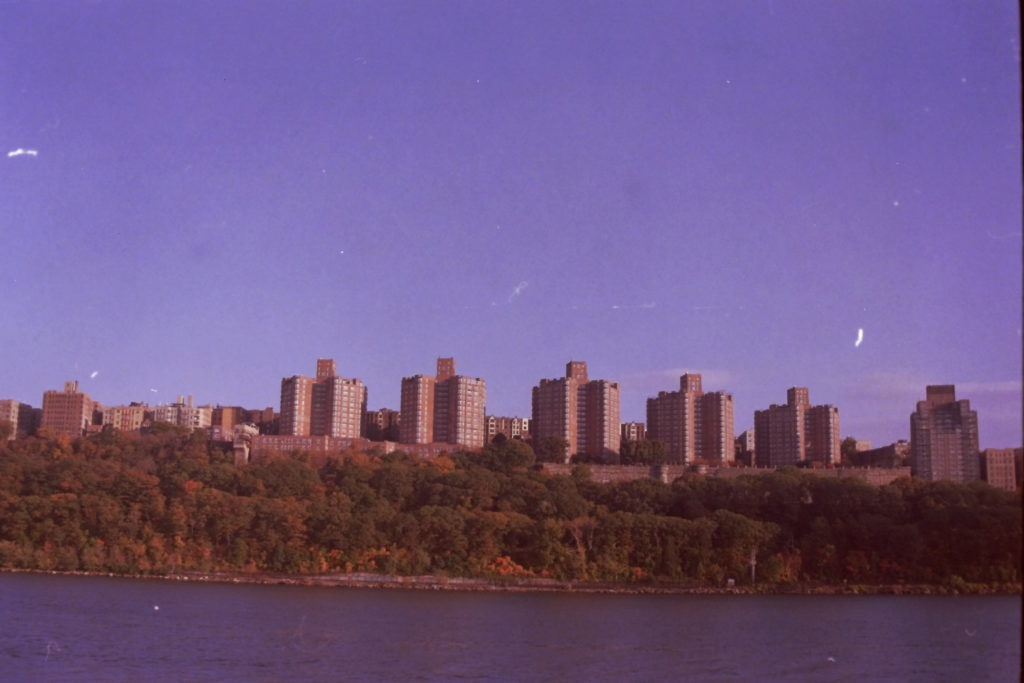
Rashawn Merchant/Earth Shiners
With bright colors and the New York City skyline, fall brings a wondrous display to any set of eyes. Experiencing peak foliage is remarkable, even more so for those on the east coast amongst the deciduous trees. I decided to venture out and combine nature and New York’s urbanscape by taking a cruise tour along the Hudson River.
Departing from Pier 36 in Manhattan, I boarded a semi-crowded boat filled with city natives, tourists, and people of all ages. The cruise took off on a Sunday afternoon for an approximately three-hour trip to Yonkers and then back toward the Statue of Liberty.
Sometimes, New Yorkers are stigmatized against doing “touristy” activities, but I recommend entirely bypassing any preconceived notions. As someone who lives in New York, I was joyous to hear a stream of facts that improved my historical knowledge of the area.
When heading north, there were immense views of skyscrapers. First, the Battery Park neighborhood showed itself in full arrangement. The tour guide spoke about the One World Trade Center, including its eight sides and being the tallest building in North America.
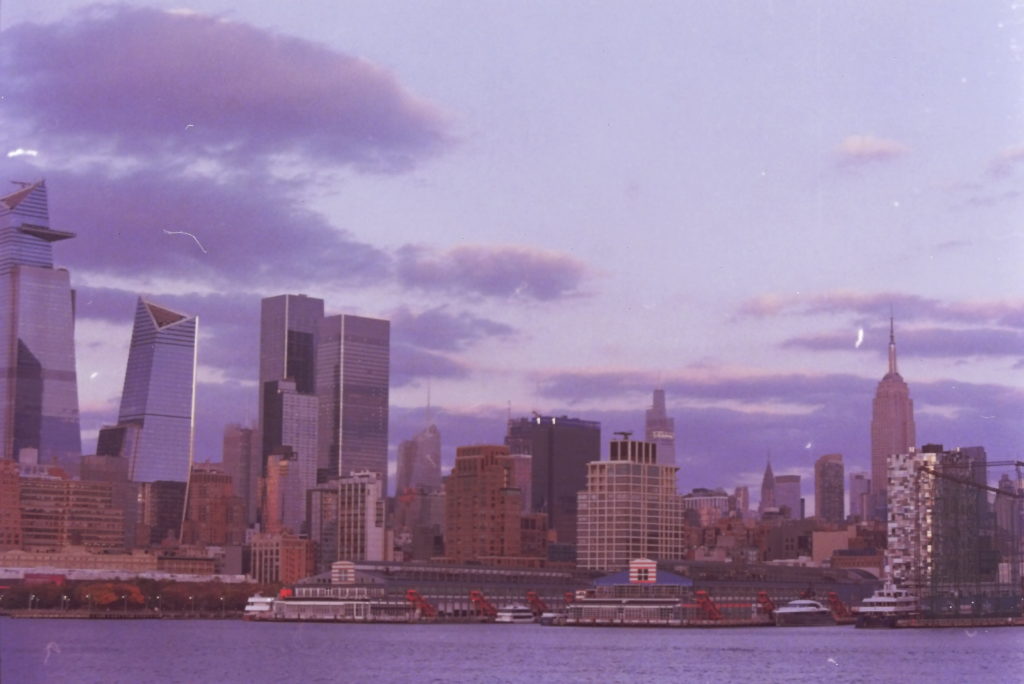
Rashawn Merchant/Earth Shiners
While moving along, we came upon midtown. New York City is constantly evolving with plenty of growth and development. All along the center of the island were cranes and newly built buildings. There were classic staples such as the Empire State Building and the Chrysler Building; however, the most eye-catching were the modern features of the Hudson Yards Area. The Vessel, Edge Building, and Highline are all new attractions that drew in crowds large enough to see from the river.
As a New Yorker, it is easy to disregard New Jersey. However, the Garden State’s Hudson neighborhoods cannot be denied their significance to this geographical section. According to WPG Talk Radio, Jersey City is one of the most expensive city in America. The median rental price is $5,500, which factors in luxury apartments and proximity to downtown NYC.
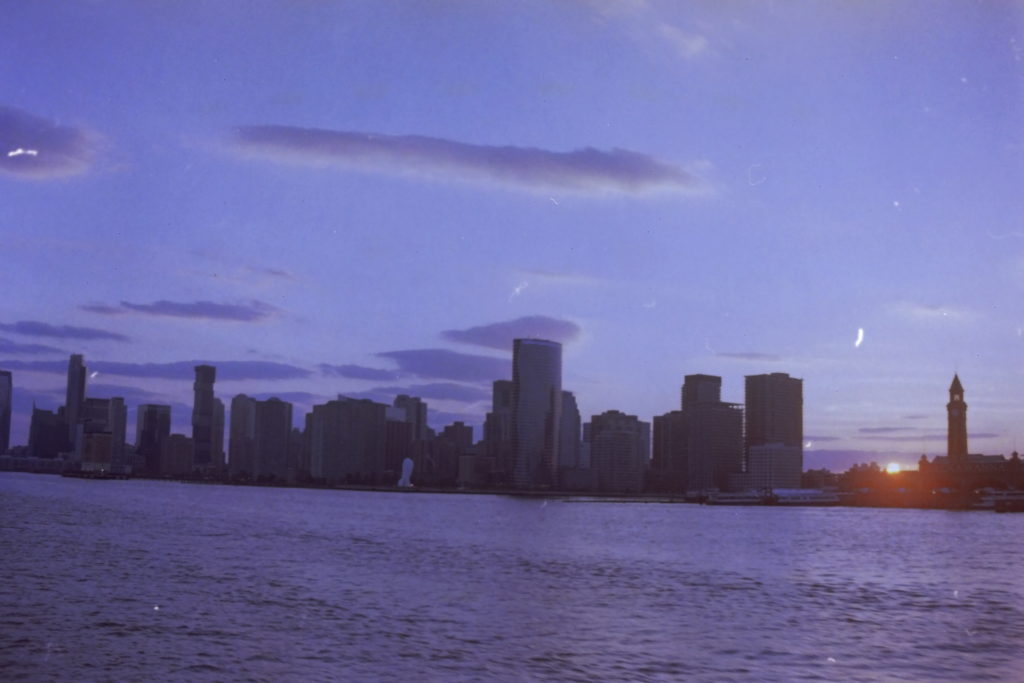
Rashawn Merchant/Earth Shiners
Further along the river tour is where the increase in tree density occurs. Nearing Columbia University, green spaces allow for a full range of fall colors. Vibrant yellows, browns, and oranges take over city space as leaves appear as falling land stars.
Fort Washington Park is a highlight of the tour. As the George Washington Bridge comes into view. The bridge’s beautiful blue steel glows wonderfully as the setting sun reflects off its towers. The area becomes serene as the perfect balance of nature and the city combine as people run along the riverwalk with cars speeding above their heads.
In the last section of the northern journey, the cruise headed up to Riverdale in The Bronx before making a U-turn at Yonkers. These neighborhoods undoubtedly contained the most amount of fall color changes. To the left, the New Jersey Palisades tipped through the cliff sides. At this point, the desire to continue forward was more powerful than ever because all urban sounds ceased for a brief moment. You could hear birds and the ruffling of trees. Regardless, as quick as the silence fell, a Metro-North train flew by as a reminder of how infrastructurally robust New York is.
On the turnaround journey back to the Financial District, mostly everyone on board rested and took in the natural light. A Hudson River cruise tour is a great way to separate from the city while staying inside its lines. Enjoy the last amount of the fall season and admire the outdoors.
How to Safely Deep-Fry a Turkey
Written by: Rashawn Khamari Merchant

Food & Wine/Russel Kilgore
While prominent, Thanksgiving turkey is one of the most controversial dishes during the holiday season. Some people feel it is too dry, while others think it’s best served the following day. However you feel about it, deep-frying your turkey can significantly enhance how you prepare the dish. Yet, it is key to note the frying method can be dangerous due to improper preparation and negligence. At Earth Shiners, we’ll provide information on how to deep-fry a turkey safely and responsibly.
1. Use proper preparation techniques
According to the Atlantic, each year, 1,000 accidental turkey frying fires are started due to improper frying methods.
2. Use an electric fryer
Electric frying gives you better control over temperature and doesn’t utilize risky natural gas.
3. Make sure your turkey is completely defrosted
Water and oil do not mix, and leftover ice can lead to spillage or explosions.
4. Cook with peanut oil instead of vegetable oil
Peanut oil is more tolerant to high temperatures than vegetable oil. This helps prevent burns and overcooking.
5. Pay attention
Never leave your fryer unattended. You should always be nearby and in proximity to a fire extinguisher.

Leave a Reply